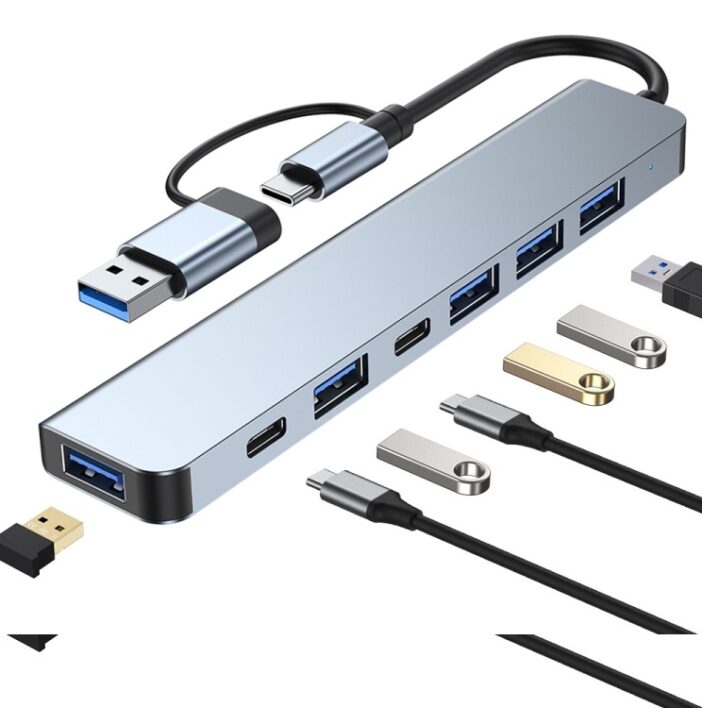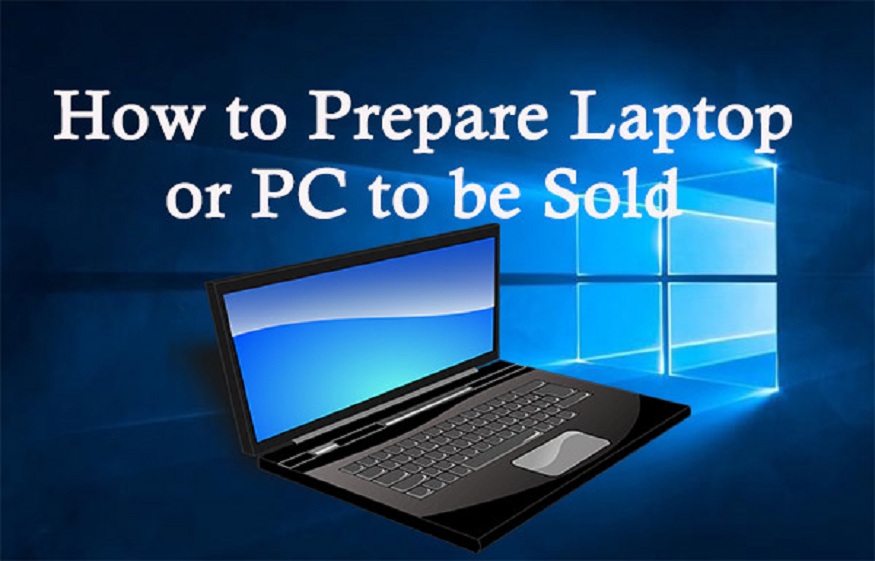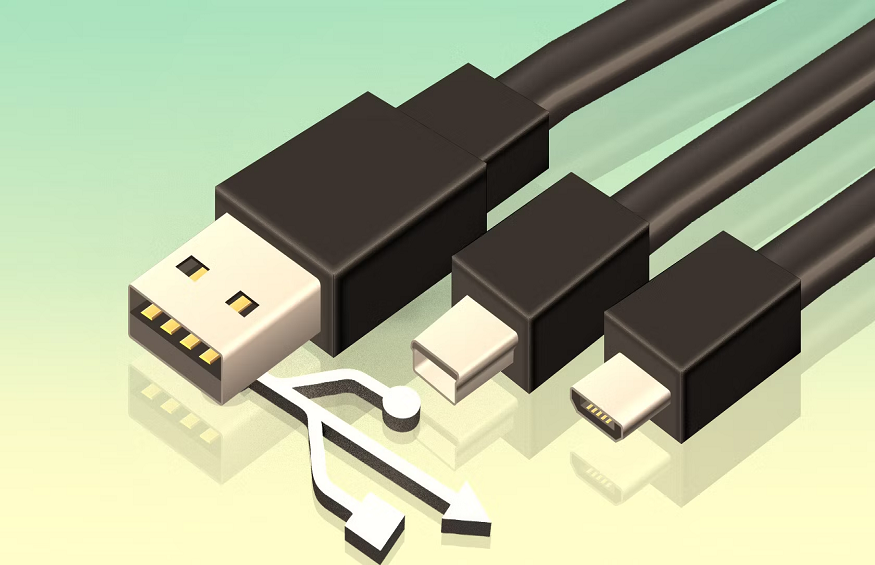In today’s fast-paced digital world, staying connected and maximizing productivity are paramount. However, as our reliance on technology grows, so does the need for efficient connectivity solutions. This is where computer docking stations come in. They have revolutionized the way we use and interact with our devices, offering a seamless and convenient way to connect multiple peripherals and expand the capabilities of our computers.
In this comprehensive article, we will delve into the myriad benefits of computer docking stations. From their evolution in connectivity standards to their ability to transform workspaces and enhance gaming experiences, we will explore how these powerful devices can truly elevate your computing endeavors. So get ready to discover a world of possibilities as we unlock the potential of computer docking stations!
The Evolution of Connectivity: From USB-A to USB-C
Technological advancements have revolutionized the way we connect devices, and the transition from USB-A to USB-C is a testament to this ever-evolving landscape. USB-A ports, with their rectangular shape and limited capabilities, were once the standard for connecting various peripherals to our computers. However, as our needs expanded and technology evolved, a new contender emerged: the sophisticated USB-C.
USB-C, with its reversible design and powerful capabilities, has swiftly become the preferred choice for many users seeking faster data transfer speeds and versatile connectivity options. Its compact size belies its incredible potential – it can handle not only data transfer but also charging laptops and powering external displays. With its ability to transmit power up to 100 watts and support resolutions up to 8K, USB-C has opened doors to a world of possibilities that were previously unimaginable.
Unleashing the Power of USB-C to HDMI: What You Need to Know
The advent of USB-C technology has revolutionized the world of connectivity, and its integration with HDMI has further expanded its capabilities. USB-C to HDMI cables or adapters offer a seamless way to connect your laptop or other compatible devices to external displays such as monitors or projectors. With this powerful combination, you can effortlessly transmit high-quality audio and video signals, transforming your viewing experience into a visual extravaganza.
USB-C to HDMI connectivity allows for impressive resolutions, including 4K Ultra HD and even 8K in some cases, delivering crystal-clear images with vivid colors and sharp details. This level of visual brilliance enhances not only entertainment experiences but also professional presentations, making them more impactful and engaging. Whether you’re watching a movie, giving a business pitch, or displaying creative content, the USB-C to HDMI connection ensures that every pixel shines brightly.
A Step-by-Step Guide: Setting Up Your Computer Docking Station
Setting up a computer USB C docking station may seem daunting at first, but with this step-by-step guide, you’ll have your workstation up and running in no time. Remember, the process may vary slightly depending on the specific model you have, so consult the user manual for detailed instructions.
- Gather all the necessary components: Start by collecting your computer docking station, power adapter, USB-C or Thunderbolt cable (if not included), and any additional peripherals you plan to connect.
- Position your docking station: Choose a suitable location near your computer setup where you’ll have easy access to all the ports and connections. Ensure there’s enough space for proper ventilation.
- Connect the power adapter: Plug one end of the power adapter into an electrical outlet and connect the other end to your docking station. Make sure it’s firmly secure.
- Connect your computer: Using a compatible USB-C or Thunderbolt cable, link your computer to the appropriate port on the docking station. This will establish a stable connection between both devices.
- Connect external displays: If you intend to use multiple monitors, connect them to the available display ports on your docking station using suitable cables (HDMI, DisplayPort, etc.). Follow any specific instructions for configuring multiple displays in your operating system settings.
- Attach peripherals: To utilize additional devices such as a keyboard or mouse, plug them into their respective USB ports on the dock. For other peripherals like speakers or external hard drives, make sure they are connected too.
Transform Your Workspace: How Docking Stations Enhance Productivity
Imagine a workspace where you seamlessly transition between tasks, effortlessly connecting and disconnecting devices with just a single motion. This is the power that docking stations bring to your work environment. Gone are the days of juggling cables and searching for available ports; docking stations provide an elegant solution to streamline your workflow and enhance productivity.
With a computer docking station, you can effortlessly connect your laptop to multiple monitors, keyboards, mice, and other peripherals. This means no more plugging and unplugging devices every time you switch tasks or locations. Simply dock your laptop into the station, and voila! Your desk instantly transforms into a command center tailored to your specific needs.
Boost Your Gaming Experience: Unleashing the Potential of Docking Stations
For avid gamers, a computer docking station is a game-changer, quite literally. Gone are the days of struggling with limited connectivity and subpar graphics. With the power of docking stations, you can elevate your gaming experience to new heights.
Imagine seamlessly connecting your gaming console, high-resolution monitor, fast Ethernet connection, and other peripherals to your laptop with just one cable. The result? A visually stunning and lag-free gaming experience that will immerse you in vibrant worlds and intense battles like never before.
Unlocking the potential of docking stations allows gamers to tap into their laptop’s full capabilities by expanding its connectivity options. You can effortlessly connect external GPUs to boost graphics performance or attach multiple monitors for a panoramic view that enhances immersion. With docking stations at your disposal, you can push your gaming boundaries and unleash your true potential as a gamer.
Bridge the Gap: Connecting Multiple Devices Seamlessly with Docking Stations
One of the most remarkable advantages of computer docking stations is their ability to bridge the gap between devices, allowing for seamless connectivity and enhanced functionality. Gone are the days of fumbling with cables and adapters, trying to connect various devices to your computer individually. With a docking station, you can effortlessly connect multiple devices simultaneously, eliminating clutter and simplifying your workflow.
Imagine a scenario where you need to transfer files from your smartphone, edit documents on your laptop, and present slides on a large screen – all at the same time. Without a docking station, this could quickly turn into a tangled mess of wires and frustration. However, by using a highly efficient docking station, you can connect your laptop, smartphone, external hard drive, monitor, keyboard, mouse, and other peripherals with ease.
Conclusion
In conclusion, computer docking stations are invaluable tools that not only streamline connectivity but also enhance productivity and convenience. By providing a single hub for all your devices, docking stations eliminate the hassle of constantly plugging and unplugging cables, allowing you to create a seamless and effici`ent workspace. With their ability to connect multiple devices simultaneously and unleash the full potential of USB-C to HDMI technology, docking stations open up a world of possibilities for professionals, gamers, and anyone seeking a versatile computing experience. Embrace the power of docking stations and unlock new levels of efficiency and connectivity in your digital endeavors.





